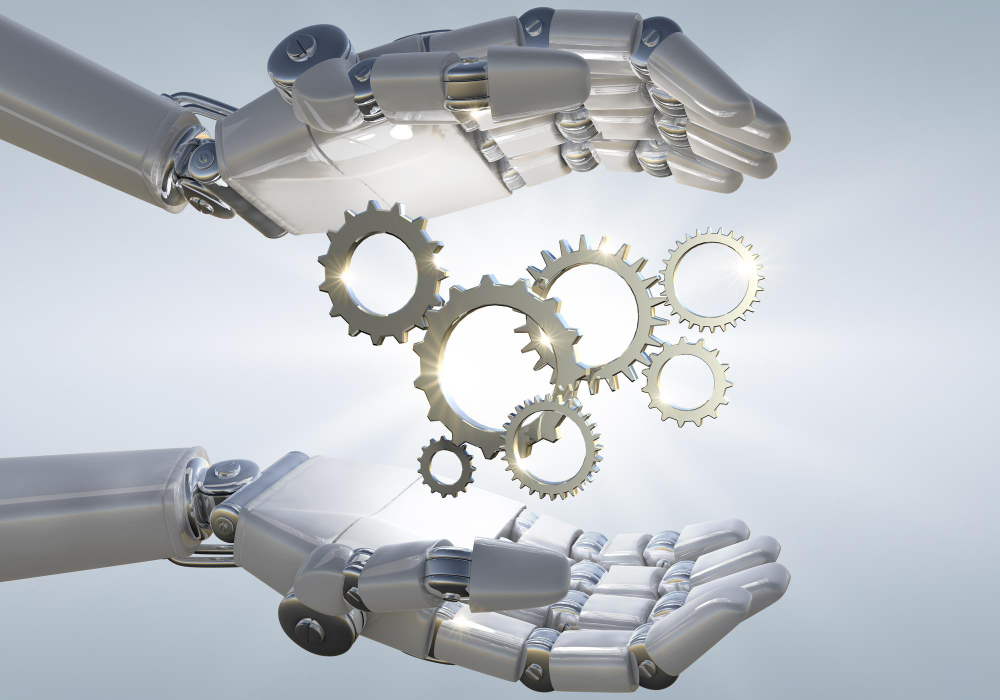In modern automation, even the most advanced robotic systems can fail to deliver consistent accuracy and stability. While engineers often blame software, motors, or alignment issues, the true problem is frequently hidden inside the mechanical joints — the robot arm bearings. For industries facing accuracy loss, backlash, or premature equipment wear, selecting the right bearings becomes mission-critical.
If you want to understand how the right robot arm bearings can eliminate inefficiencies, this guide breaks down everything in a practical, user-pain-point approach.
1. Why Robot Arm Bearings Are Critical to Automation Stability
Robot arms operate under extreme conditions: rapid acceleration, repetitive motion, unpredictable load shifts, and multi-axis rotation. Bearings are the core mechanical elements that ensure:
- Smooth joint rotation
- Zero-backlash movement
- Precision positioning and repeatability
- High load-handling capability
- Long-term operational reliability
When the bearings underperform, the entire robotic cell becomes unstable — resulting in product defects, motion errors, noise, vibration, and costly downtime.
Common Pain Points Caused by Poor-Quality Bearings
- Declining repeatability over time
- Increased backlash in robot joints
- High friction, overheating, or irregular movement
- Frequent maintenance interruptions
- Reduced payload capacity
- Faster wear in gearboxes and servo motors
2. Types of Robot Arm Bearings and Their Use Cases
To address performance issues in different robot joints, manufacturers rely on specific bearing types optimized for accuracy, stiffness, and torque management.
■ Crossed Roller Bearings
Used in wrist joints and rotary tables
- Extremely high rotational accuracy
- Handles radial, axial, and moment loads simultaneously
- Ideal for compact robotic joints requiring rigidity
■ Thin-Section Bearings
Preferred in lightweight or space-constrained robot designs
- Slim profile without compromising load capacity
- Reduces robot arm weight for higher speed and energy efficiency
■ Harmonic Drive Bearings
Used for precision-controlled motion
- Designed for torque transmission
- High stiffness with zero backlash
- Best for highly repetitive robotic tasks
■ Angular Contact Bearings
Common in high-speed robot joints
- Excellent support for combined loads
- Enhances speed, rotational accuracy, and durability
3. What Causes Robot Arm Bearing Failures?
Even the best robot arms can fail if bearings experience stress beyond their designed limits. Understanding these failure causes helps you prevent downtime and increase productivity.
A. Contamination & Dust Ingress
The most common reason for premature wear. Fine dust particles damage rolling elements and degrade lubrication.
B. High-Speed Overload
Excessive rotational speed affects internal raceways and leads to overheating.
C. Misalignment During Installation
Even minor misalignment causes uneven load distribution and early failure.
D. Poor Lubrication Practices
Robot arm bearings require clean, high-performance lubricants designed for continuous motion.
E. Vibration & Shock Loads
Impacts from machining, welding, or handling operations increase fatigue wear.
4. Key Features You Should Demand from High-Performance Robot Arm Bearings
To avoid performance drop or frequent replacements, industries should prioritize the following specifications while sourcing bearings:
✔ Ultra-High Precision (P5/P4/P2 Grades)
Minimizes backlash and ensures consistent motion performance.
✔ High Rigidity for Heavy Load Handling
Prevents deformation under multi-directional loads.
✔ Corrosion-Resistant Materials
Protect the bearing from corrosion in harsh industrial environments.
✔ Optimized Lubrication Retention
Ensures smooth operation under continuous high-speed cycling.
✔ Low Friction & Noise Reduction
Enhances robot efficiency and extends component lifespan.
5. Industries that Rely on High-Performance Robot Arm Bearings
Robot arm bearings play a crucial role in the following sectors:
- Automotive manufacturing
- Electronics assembly
- Aerospace component handling
- Food & beverage automation
- Medical equipment production
- Metal fabrication & welding automation
- Logistics & warehouse robotics
In all these industries, precision bearings ensure stability, accuracy, and energy efficiency.
6. Why Yuwei Robot Arm Bearings Stand Out
Yuwei offers precision-engineered robot arm bearings designed for demanding multi-axis robotic applications. Their products focus on:
- High-grade steel for long-term durability
- Optimized internal structure for load and torque handling
- Smooth rotation and minimal friction
- Customizable dimensions for OEM robotic systems
- Strong performance under continuous high-speed operation
Their engineering support also helps you select the correct bearing series based on load, speed, axis type, and space constraints.
Conclusion
Inconsistent accuracy, increasing maintenance, or frequent downtime often point to a deeper mechanical issue — your robot arm bearings. Investing in high-precision bearings dramatically improves stability, payload capacity, and long-term operational reliability.
If you’re ready to enhance your robotic system or explore industry-grade solutions, check out the full range of robot arm bearings that support multi-axis performance, high rigidity, and long service life.
For engineering consultations or to source reliable components for your application, visit Yuwei today — your long-term partner for high-precision automation components.

